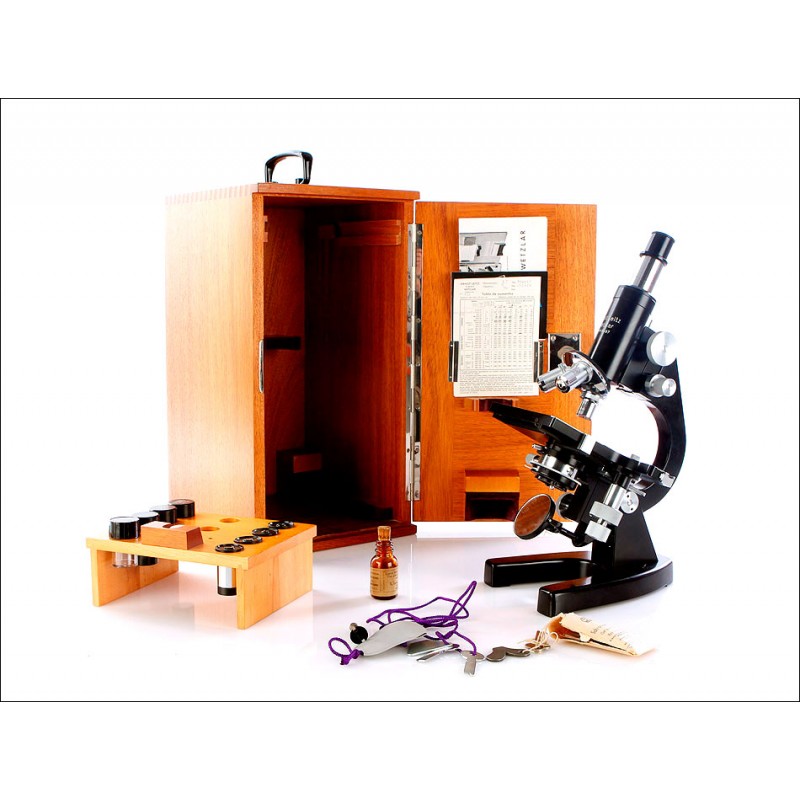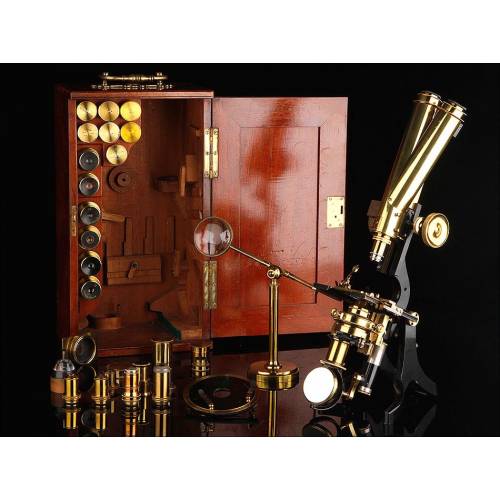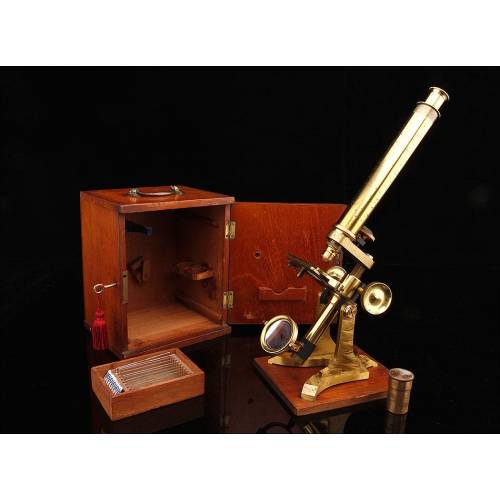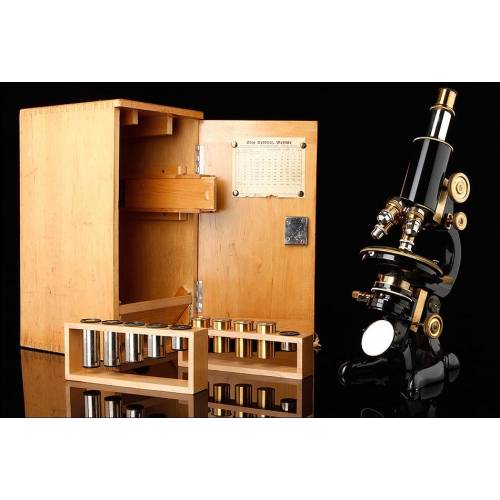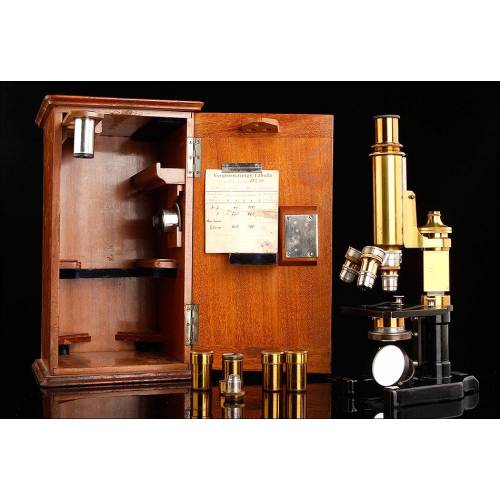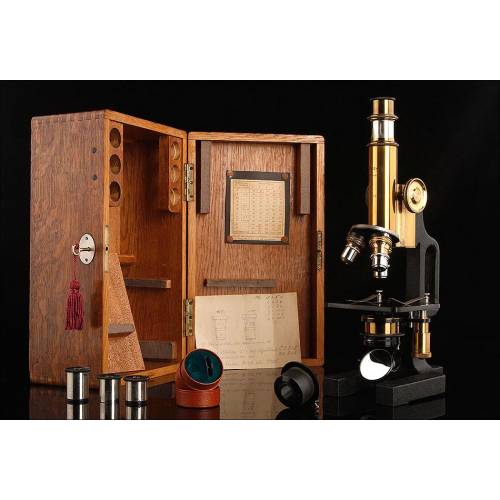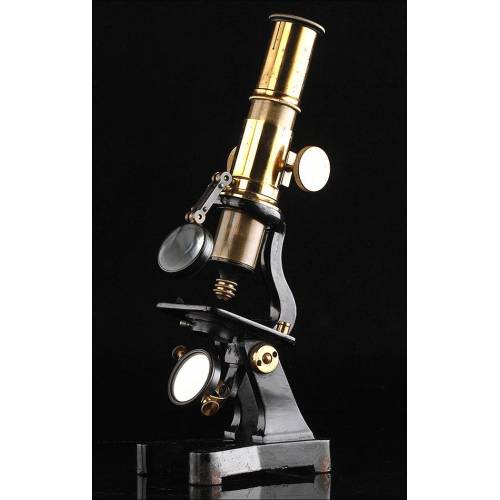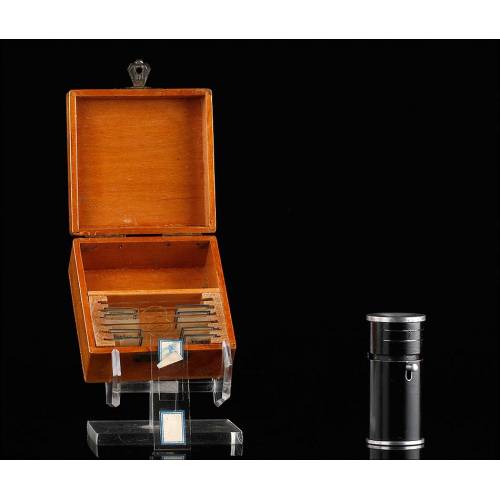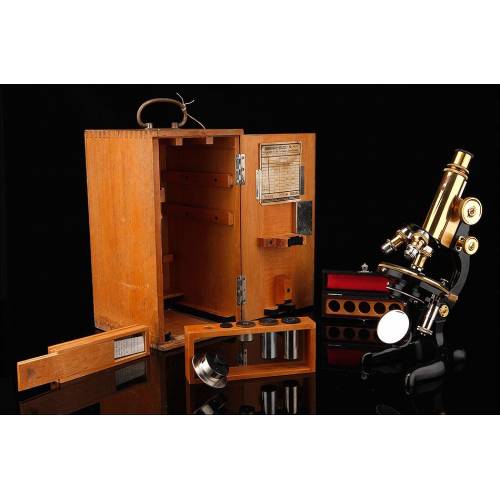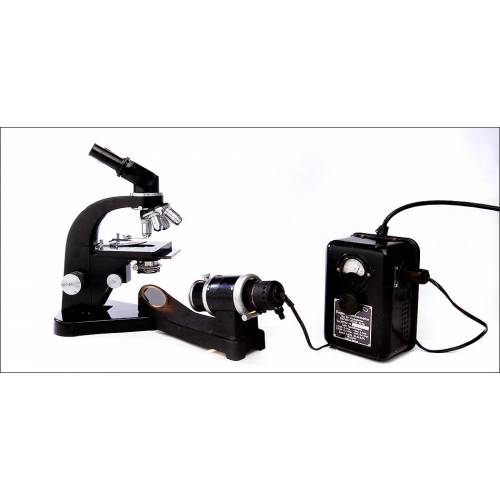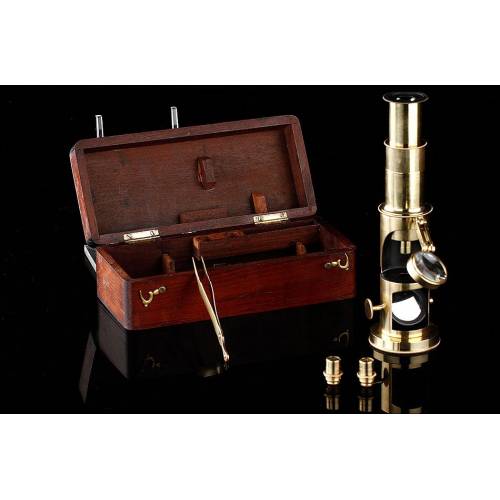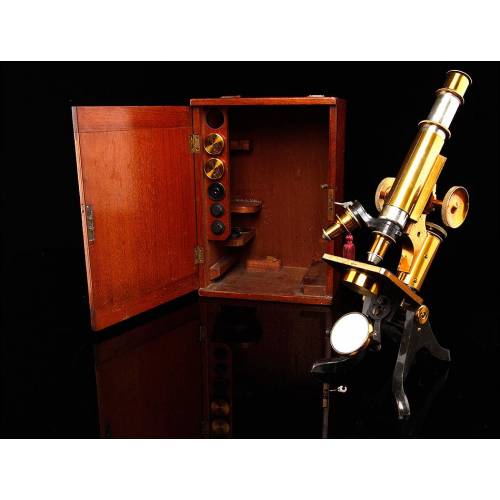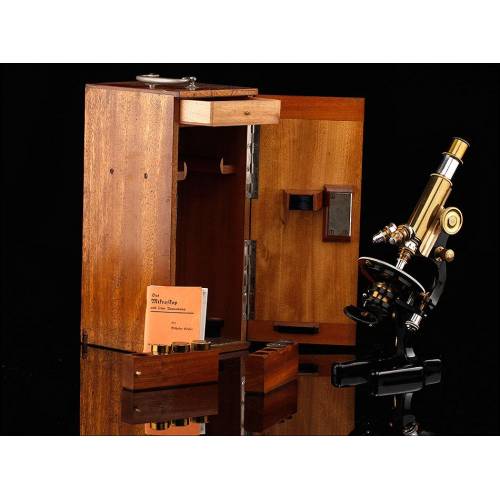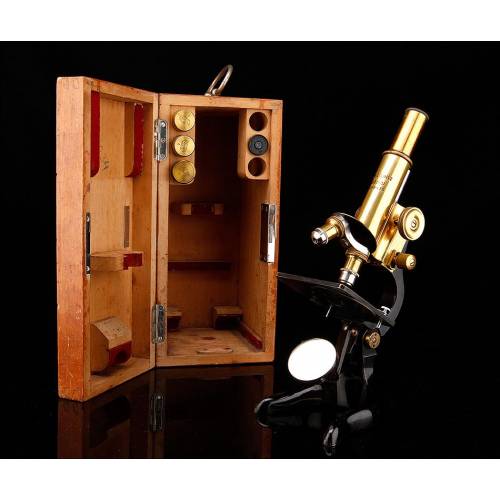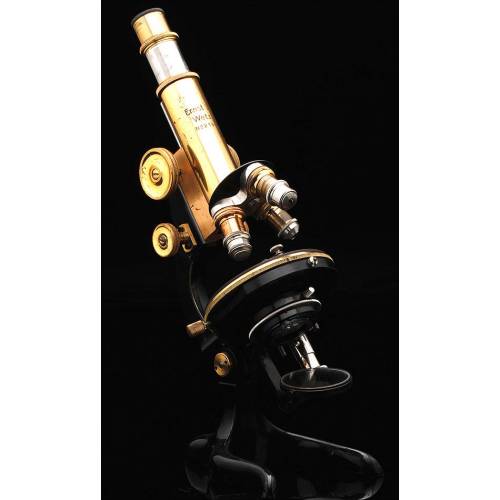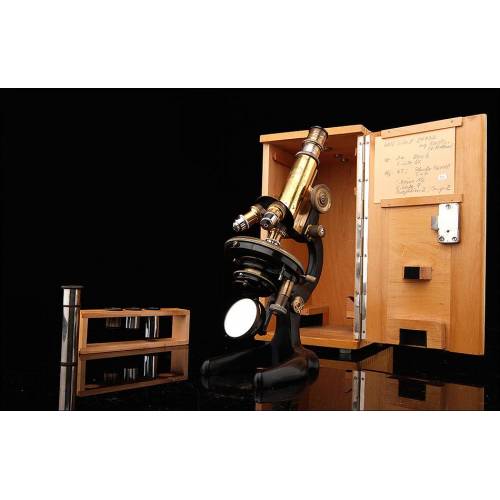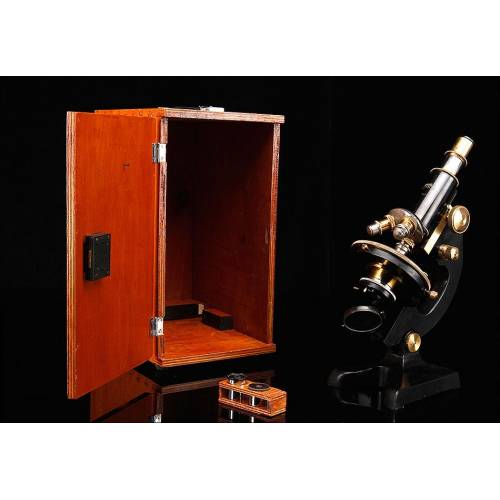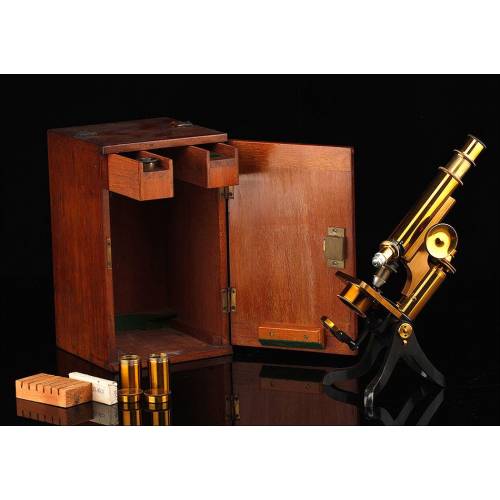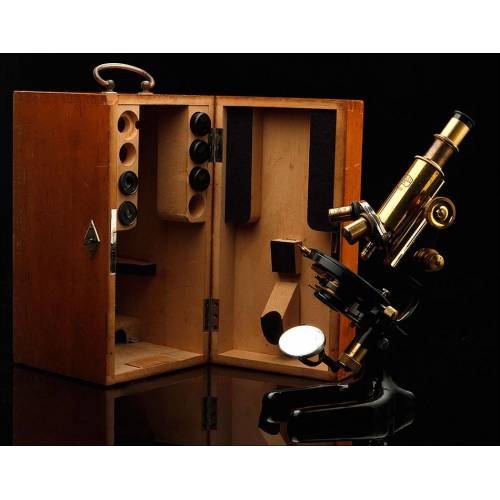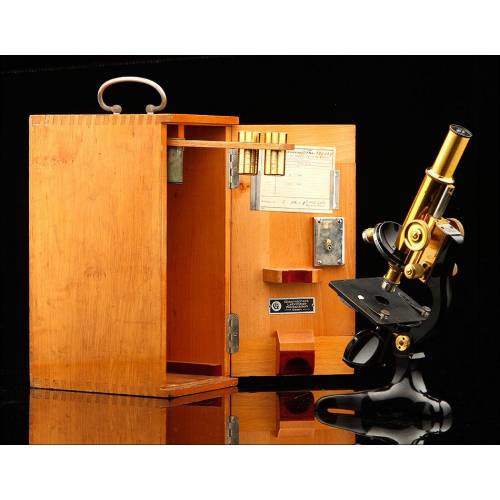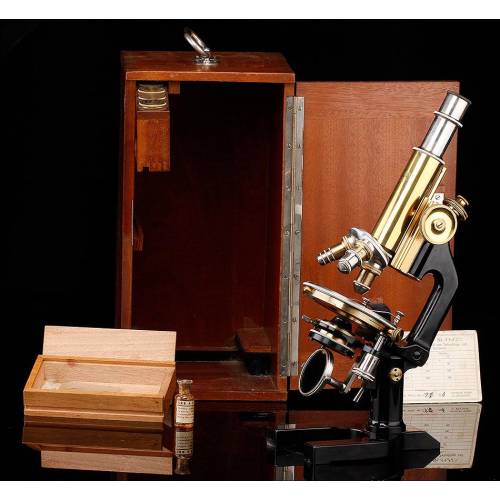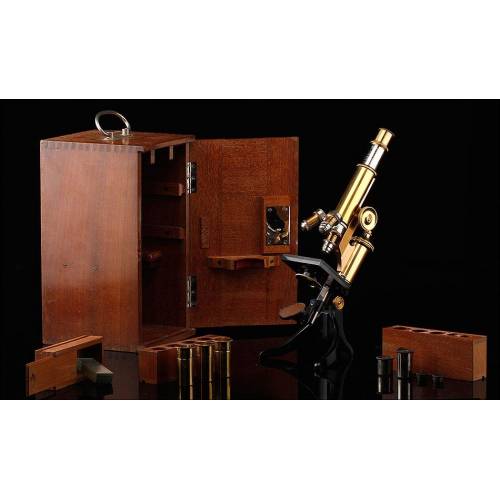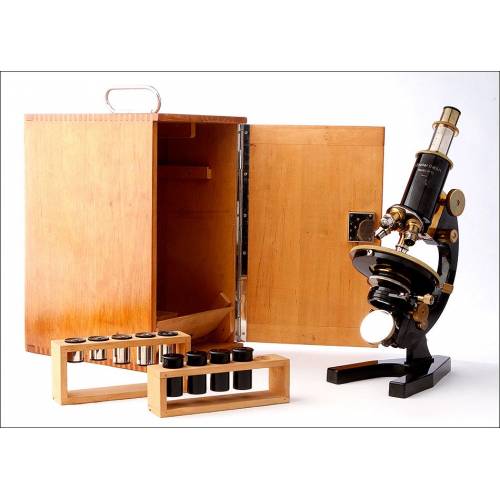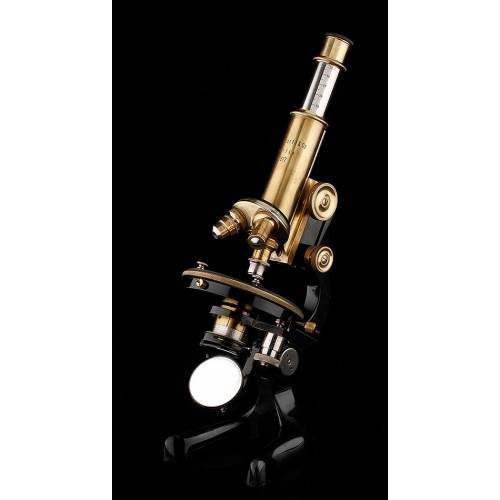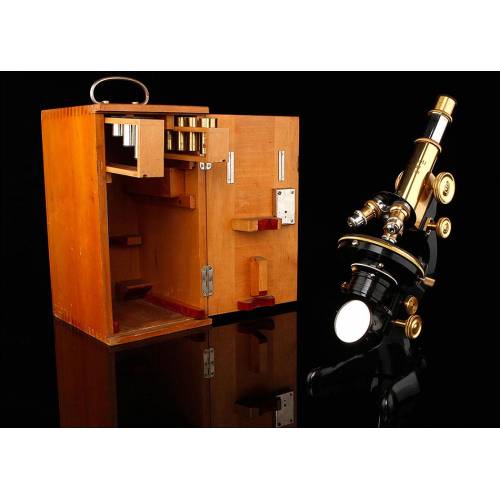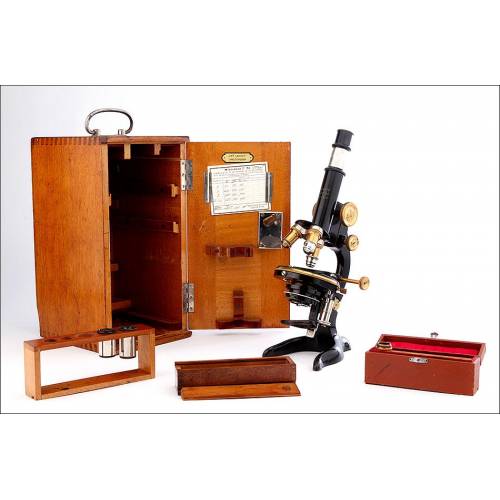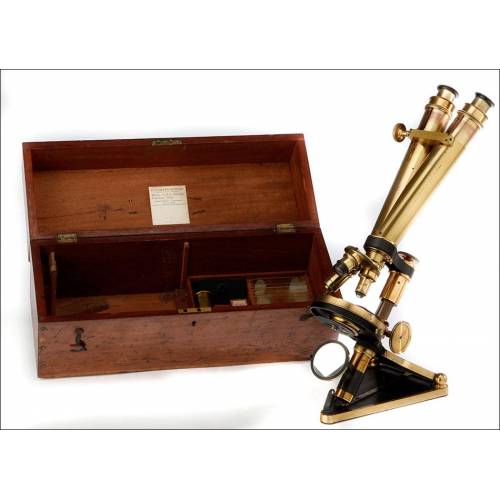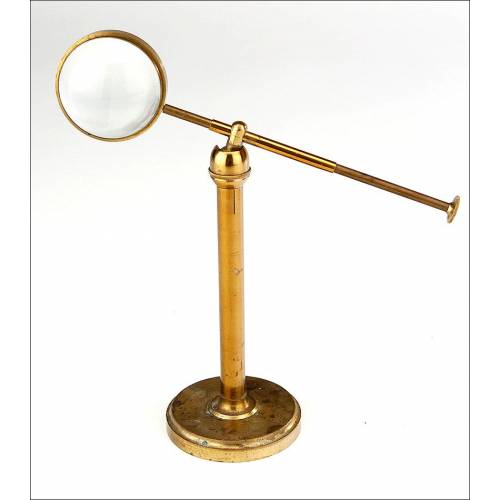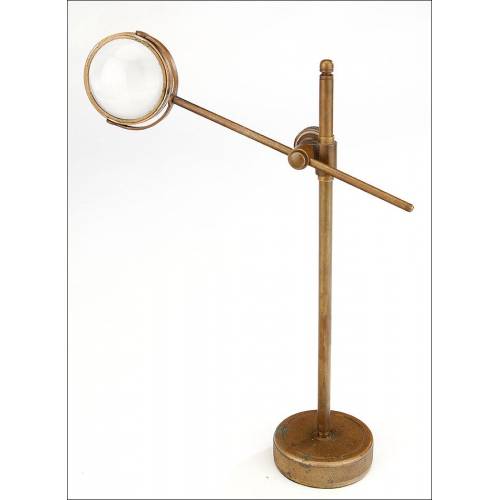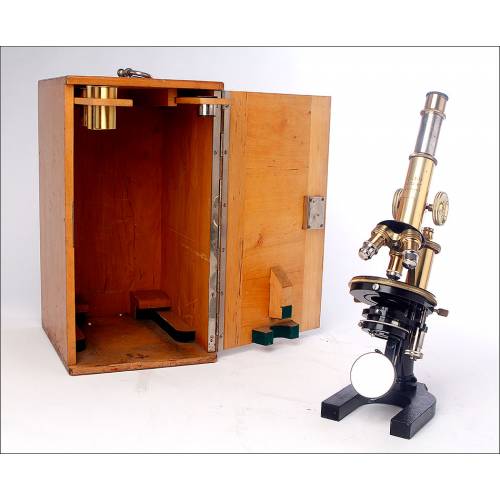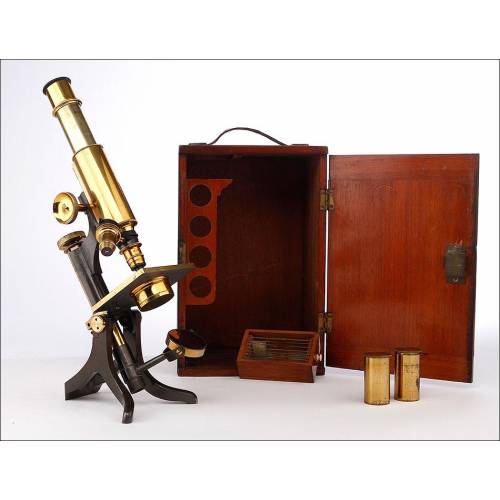C-057
Impeccable Antique Leitz Wetzlar Microscope, 1953
Impressive antique E. Leitz Wetzlar microscope. Leitz Wetzlar complete and flawless. In perfect working order.
Sold!
Amazing antique E. Leitz Wetzlar microscope in mint condition, with all its original component parts and pieces. The microscope mounts a three-lens revolving nosepiece and comes from a medical laboratory located in Zaragoza, Spain. It works perfectly and comes with its original solid mahogany wooden case which also contains a complete accessory set. The microscope is made of black-enameled cast iron and mounts silvery-metal mobile component parts and screws. The whole set is in incredible condition and this turns this instrument into an exclusive item, worthy of inclusion in the best collection. At its front side, the microscopes turret bears the engraved manufacturers name and the instruments serial number: E. Leitz Wetzlar Nr 446467. This inscription is also clearly engraved in other parts and also in the lenses. The original accessory set that comes with this fantastic instrument includes extra lenses and eyepieces in their respective sleeves, a small glass bottle with cork stopper and a series of keys joined by a purple cord. The case where this set is contained is made of solid light-colored mahogany wood. It is in outstanding condition and has a riveted metal plate with the name of the shop where the microscope was once sold: M. ALVAREZ MADRID. For its impressive condition and high quality, this antique E. Leitz Wetlzar microscope deserves to belong to a great collection or a renowned science museum. Measurements: Width: 8.2 in / 21 cm. Height: 14.9 in / 38 cm.Ernst Leitz Wetzlar HistoryThe beginnings of the famous optic material manufacturing company named Ernst Leitz Wetzlar can be found in the first half of the 19th century, when the mechanic and selft-taught mathematician Carl Kellner founded the Carl Kellner Optisches Institut in Wetlzar, Germany. After his early death his widow maintained the business, and in 1864 the mechanical engineer Ernst Leitz entered the company. Just five years later, Leitz took control of the firm and changed its name for Ernst Leitz Wetzlar. Leitz led the company to success after introducing improvements such as serial production, raising sales volume rapidly after 1871. Leitz microscopes included technical improvements that increased their quality; by the late 19th century the company already had a worldwide reputation. Ernst Leitz died in 1920 and the leadership of the firm passed to his son. As well as for their microscopes and optic material, Leitz became hugely famous for their famous Leica cameras (abbreviation of Leitz Camera).

